Abstract
In order to establish the relative importance of genetic factors on the variation in plasma concentration of coagulation factors VIII and IX, these parameters were determined in 74 monozygotic and 84 like-sexed dizygotic twin pairs. The twins belonged to two age groups: 33-39 years and 57-62 years. Factor VIII was determined as factor VIII coagulant antigen (VIIICAg) and as factor VIII-related antigen (VIIIRAg). Factor IX was determined as factor IX antigen (IXAg). A higher value for each coagulation factor was found in the older-age group compared to the younger group, whereas no difference was found between the sexes. A significant correlation was found between values for VIIIRAg and VIIICAg (r = .56). For VIIICAg, it could be demonstrated that the age effect was secondary to the age effect on VIIIRAg. The concentration of VIIICAg and VIIIRAg varied among ABO blood types, being lowest in type O individuals, higher in A2 individuals, and highest in A1 and B individuals. The effect of the ABO locus on VIIICAg was secondary to an effect on VIIIRAg. Analysis of variance revealed a significant genetic influence on the variance of VIIICAg and VIIIRAg with a heritability estimate of .57 for VIIICAg and .66 for VIIIRAg. This is in agreement with a previous hypothesis of an effect of several autosomal genes on factor VIII concentration. Thirty percent of the genetic variance of VIIIRAg was due to the effect of ABO blood type. The ABO locus is therefore a major locus for the determination of factor VIII concentration. No significant genetic effect on the variation in plasma concentration of IXAg could be detected.
Full text
PDF
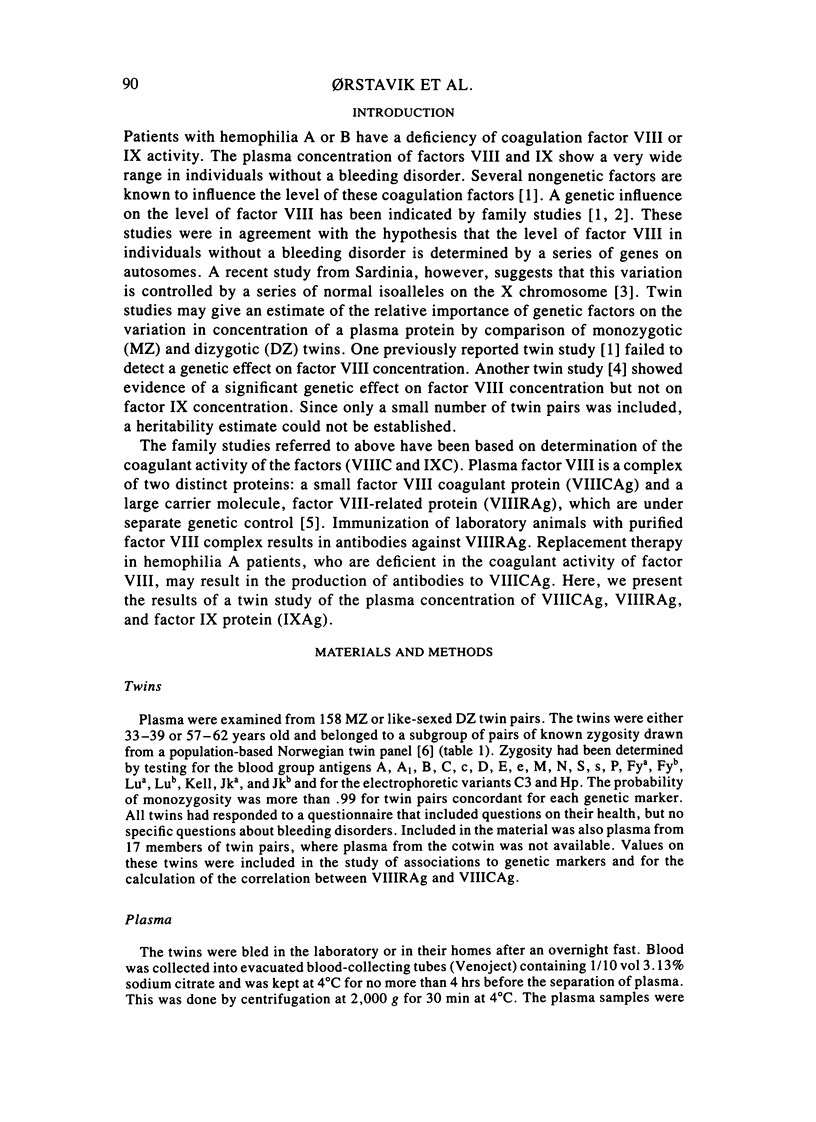
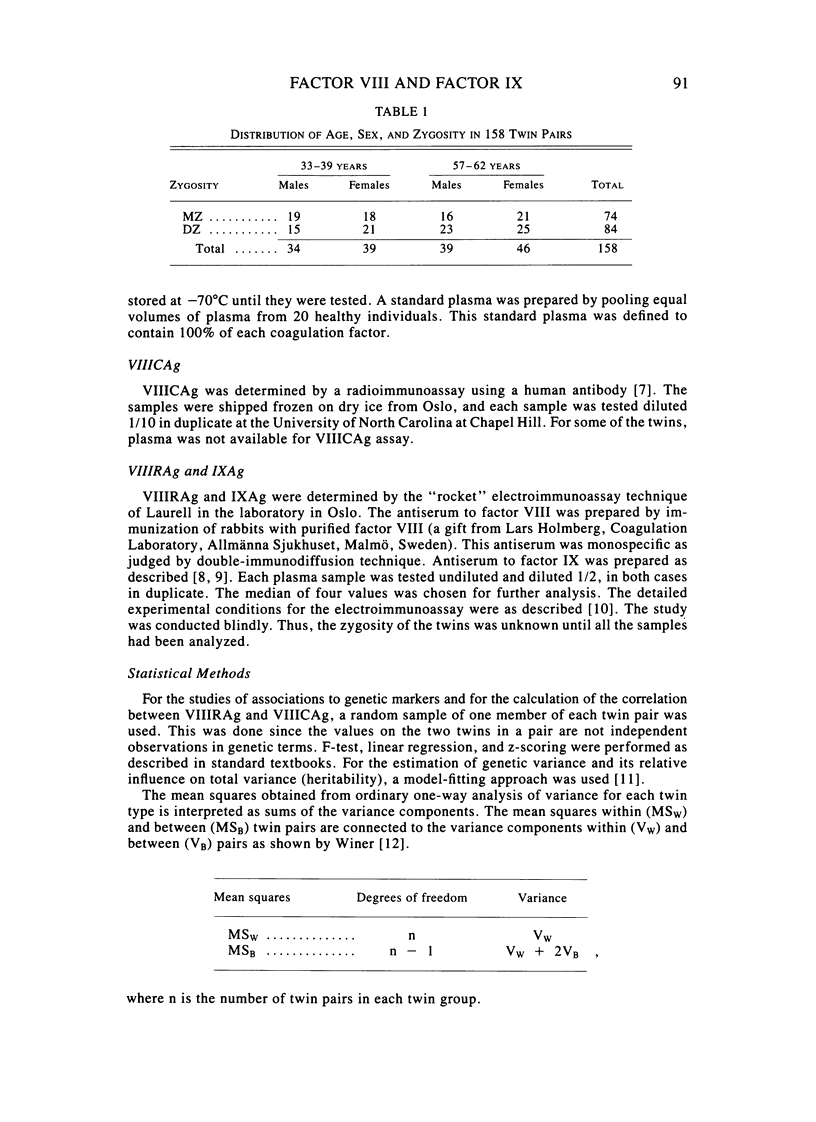

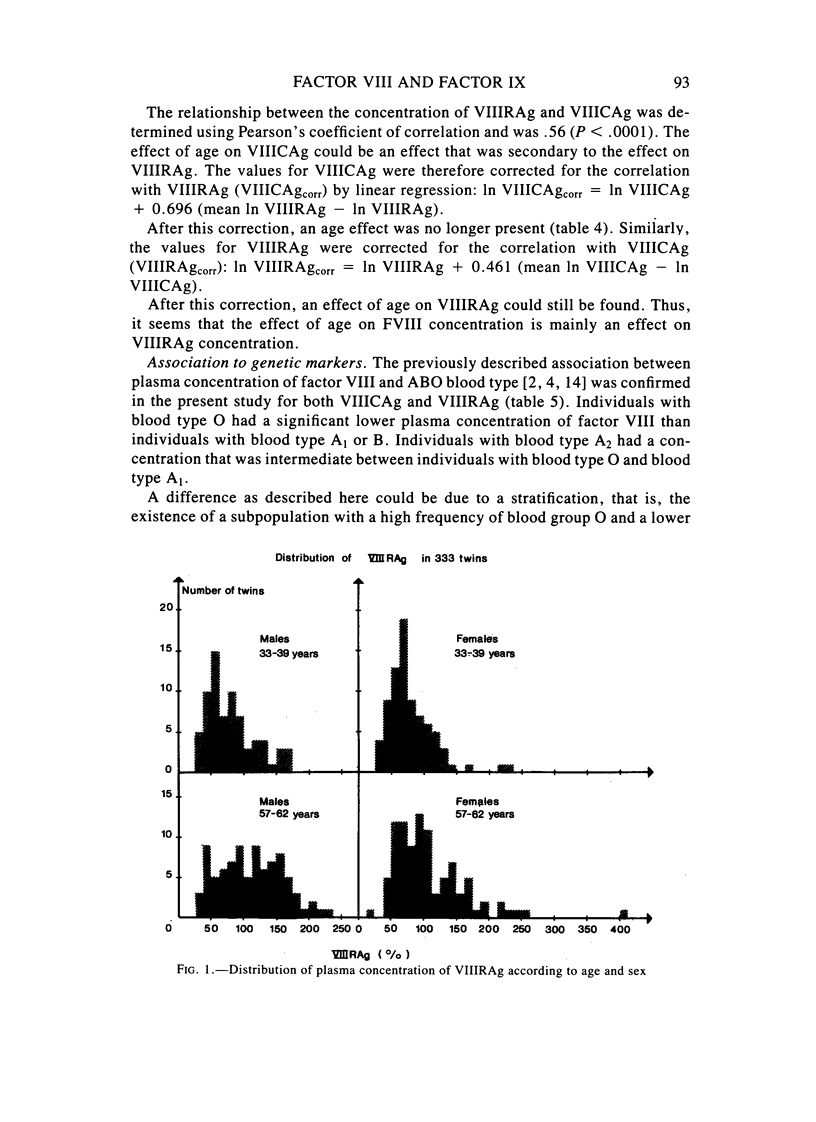

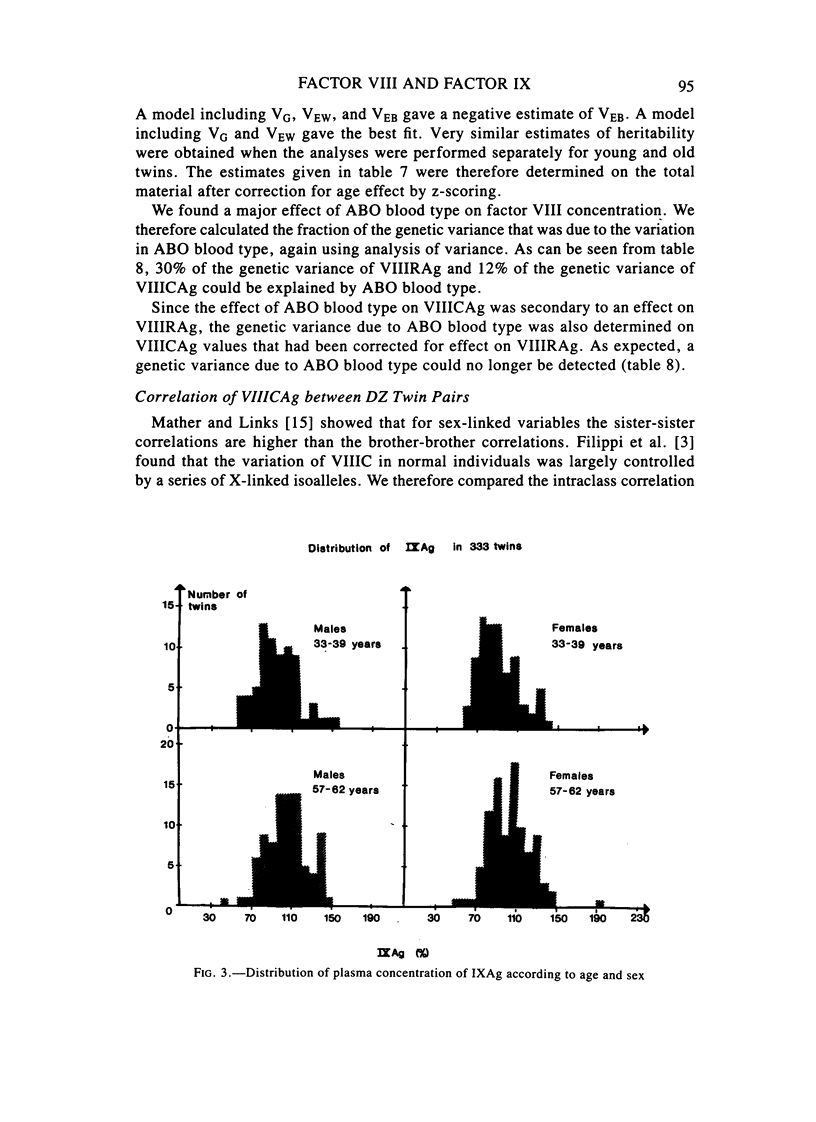

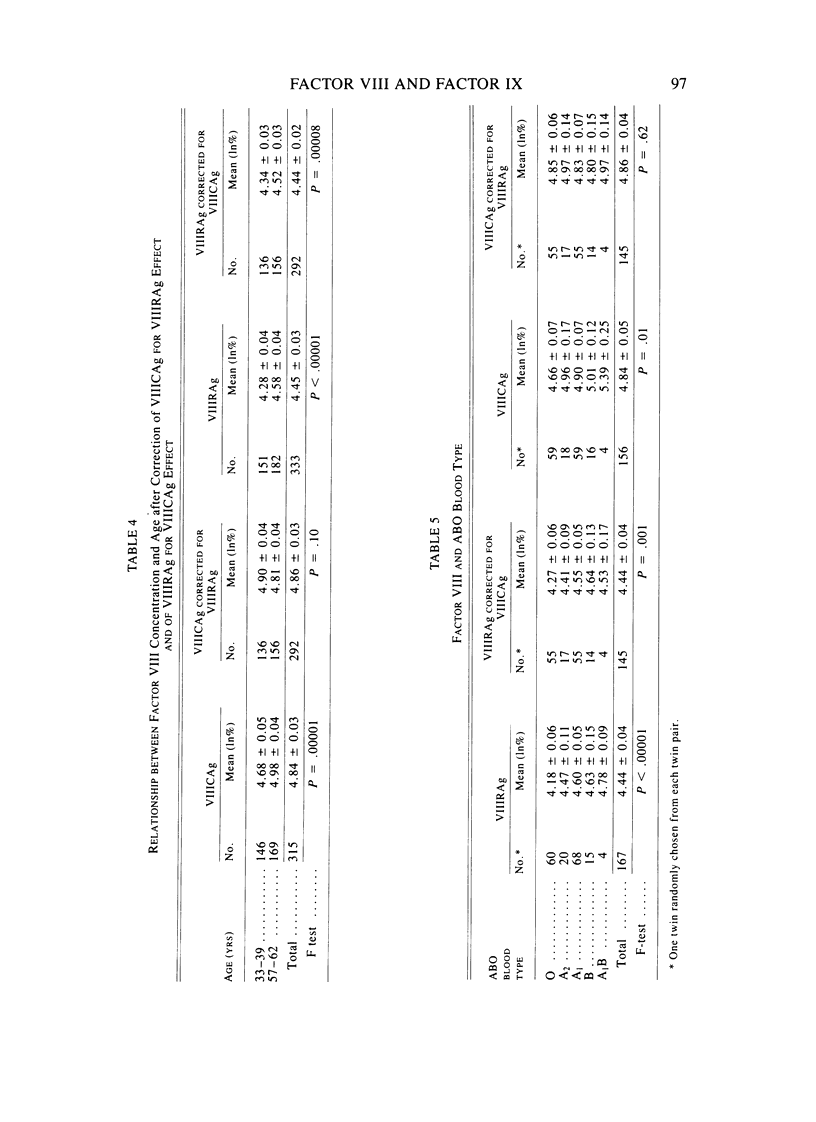
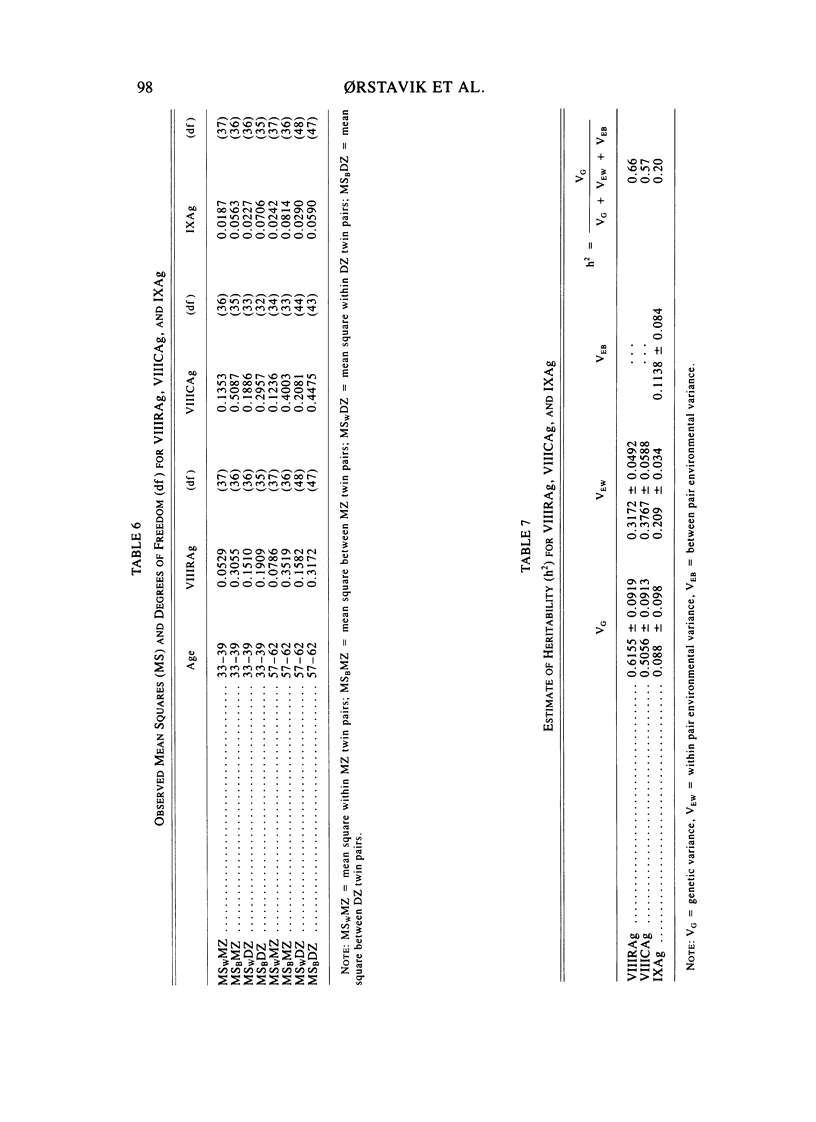
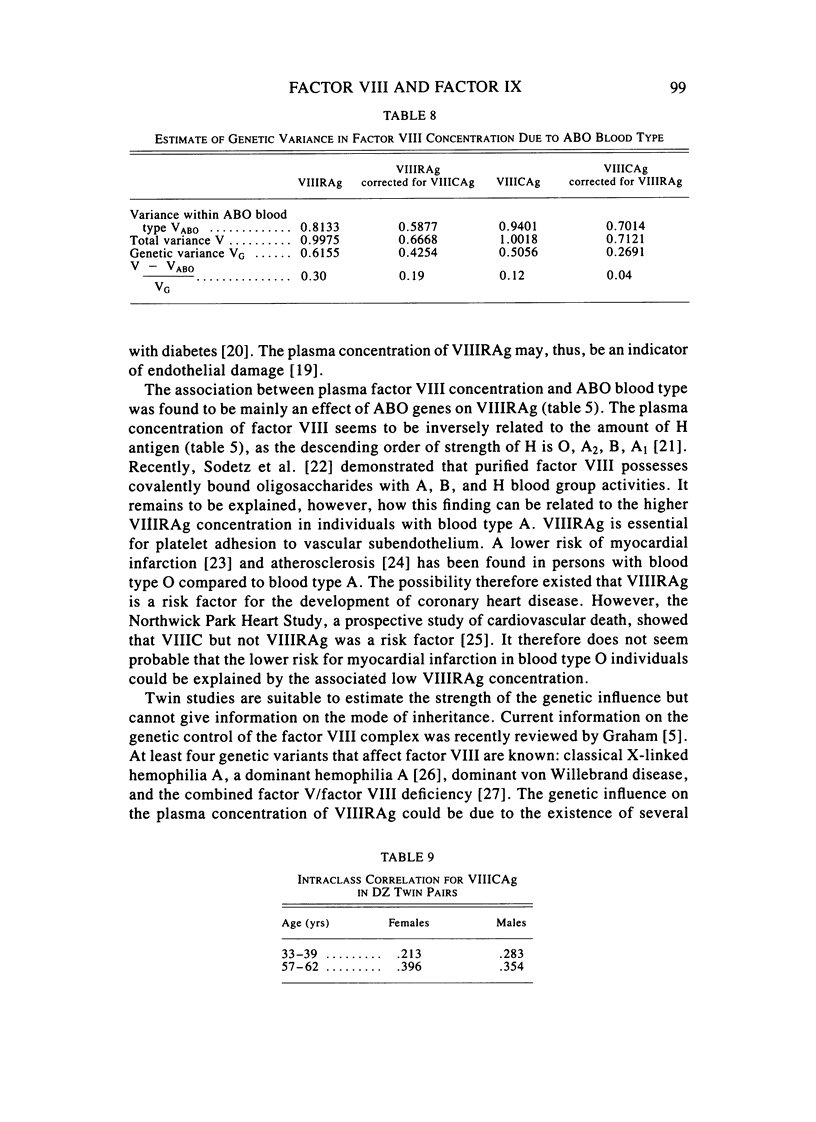
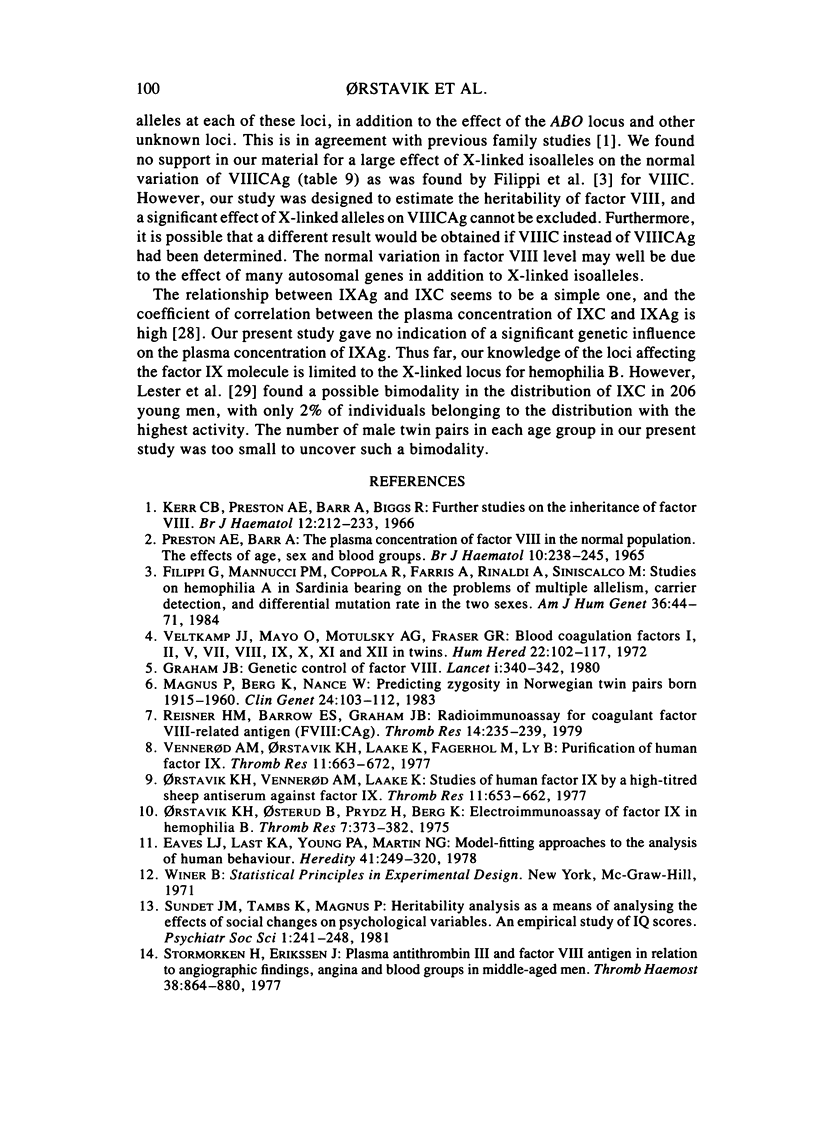
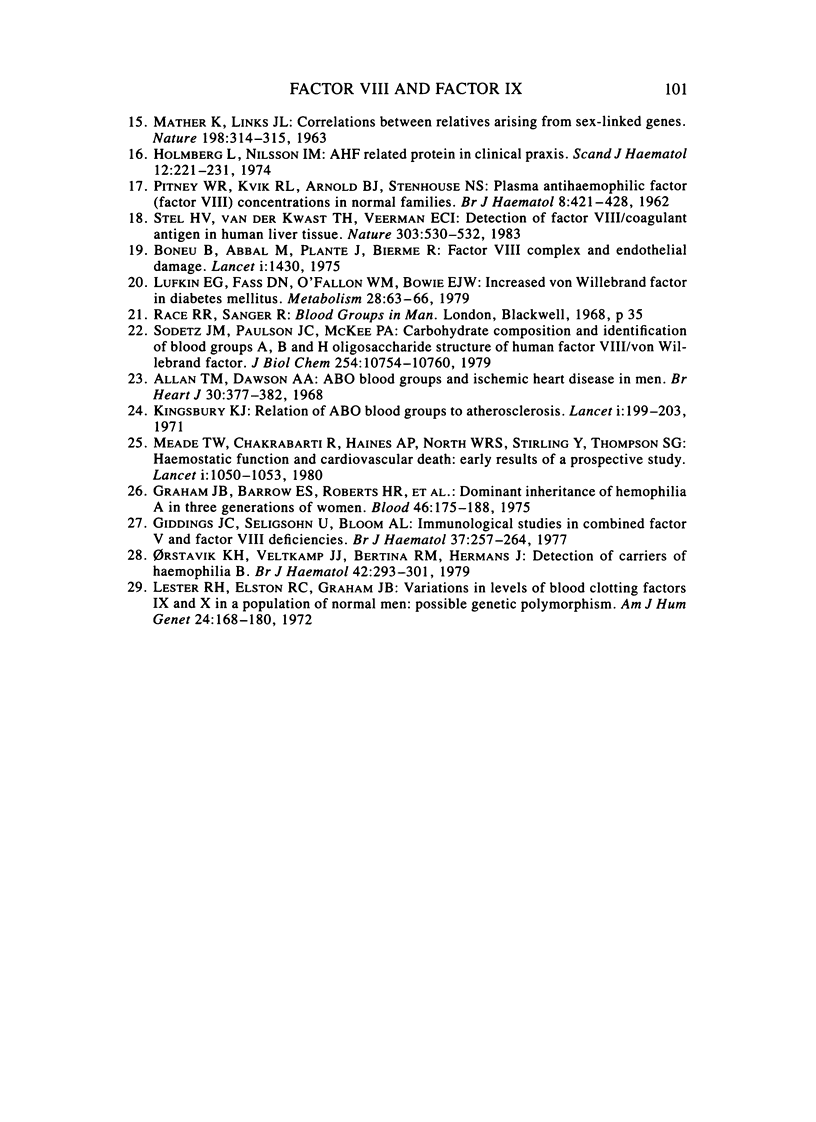
Selected References
These references are in PubMed. This may not be the complete list of references from this article.
- Allan T. M., Dawson A. A. ABO blood groups and ischaemic heart disease in men. Br Heart J. 1968 May;30(3):377–382. doi: 10.1136/hrt.30.3.377. [DOI] [PMC free article] [PubMed] [Google Scholar]
- Boneu B., Abbal M., Plante J., Bierme R. Letter: Factor-VIII complex and endothelial damage. Lancet. 1975 Jun 28;1(7922):1430–1430. doi: 10.1016/s0140-6736(75)92650-1. [DOI] [PubMed] [Google Scholar]
- Eaves L. J., Last K. A., Young P. A., Martin N. G. Model-fitting approaches to the analysis of human behaviour. Heredity (Edinb) 1978 Dec;41(3):249–320. doi: 10.1038/hdy.1978.101. [DOI] [PubMed] [Google Scholar]
- Filippi G., Mannucci P. M., Coppola R., Farris A., Rinaldi A., Siniscalco M. Studies on hemophilia A in Sardinia bearing on the problems of multiple allelism, carrier detection, and differential mutation rate in the two sexes. Am J Hum Genet. 1984 Jan;36(1):44–71. [PMC free article] [PubMed] [Google Scholar]
- Giddings J. C., Seligsohn U., Bloom A. L. Immunological studies in combined factor V and factor VIII deficiency. Br J Haematol. 1977 Oct;37(2):257–264. doi: 10.1111/j.1365-2141.1977.tb06842.x. [DOI] [PubMed] [Google Scholar]
- Graham J. B., Barrow E. S., Roberts H. R., Webster W. P., Blatt P. M., Buchanan P., Cederbaum A. I., Allain J. P., Barrett D. A., Gralnick H. R. Dominant inheritance of hemophilia A in three generations of women. Blood. 1975 Aug;46(2):175–188. [PubMed] [Google Scholar]
- Graham J. B. Genetic control of factor VIII. Lancet. 1980 Feb 16;1(8164):340–342. doi: 10.1016/s0140-6736(80)90887-9. [DOI] [PubMed] [Google Scholar]
- Holmberg L., Nilsson I. M. AHF related protein in clinical praxis. Scand J Haematol. 1974;12(3):221–231. doi: 10.1111/j.1600-0609.1974.tb00202.x. [DOI] [PubMed] [Google Scholar]
- Kerr C. B., Preston A. E., Barr A., Biggs R. Further studies on the inheritance of factor 8. Br J Haematol. 1966 Mar;12(2):212–233. doi: 10.1111/j.1365-2141.1966.tb05627.x. [DOI] [PubMed] [Google Scholar]
- Kingsbury K. J. Relation of ABO blood-groups to atherosclerosis. Lancet. 1971 Jan 30;1(7692):199–203. doi: 10.1016/s0140-6736(71)90945-7. [DOI] [PubMed] [Google Scholar]
- Lester R. H., Elston R. C., Graham J. B. Variations in levels of blood clotting factors IX and X in a population of normal men: possible genetic polymorphisms. Am J Hum Genet. 1972 Mar;24(2):168–180. [PMC free article] [PubMed] [Google Scholar]
- Lufkin E. G., Fass D. N., O'Fallon W. M., Bowie E. J. Increased von Willebrand factor in diabetes mellitus. Metabolism. 1979 Jan;28(1):63–66. doi: 10.1016/0026-0495(79)90169-0. [DOI] [PubMed] [Google Scholar]
- MATHER K., JINKS J. L., GARN S. M., ROHMANN C. G. Correlations between relatives arising from sex-linked genes. Nature. 1963 Apr 20;198:314–316. doi: 10.1038/198314a0. [DOI] [PubMed] [Google Scholar]
- Magnus P., Berg K., Nance W. E. Predicting zygosity in Norwegian twin pairs born 1915-1960. Clin Genet. 1983 Aug;24(2):103–112. doi: 10.1111/j.1399-0004.1983.tb02220.x. [DOI] [PubMed] [Google Scholar]
- Meade T. W., North W. R., Chakrabarti R., Stirling Y., Haines A. P., Thompson S. G., Brozovié M. Haemostatic function and cardiovascular death: early results of a prospective study. Lancet. 1980 May 17;1(8177):1050–1054. doi: 10.1016/s0140-6736(80)91498-1. [DOI] [PubMed] [Google Scholar]
- Orstavik K. H., Osterud B., Prydz H., Berg K. Electroimmunoassay of factor IX in hemophilia B. Thromb Res. 1975 Sep;7(3):373–382. doi: 10.1016/0049-3848(75)90031-6. [DOI] [PubMed] [Google Scholar]
- Orstavik K. H., Veltkamp J. J., Bertina R. M., Hermans J. Detection of carriers of haemophilia B. Br J Haematol. 1979 Jun;42(2):293–301. doi: 10.1111/j.1365-2141.1979.tb01133.x. [DOI] [PubMed] [Google Scholar]
- Orstavik K. H., Vennerod A. M., Laake K. Studies of human factor IX by a high-titred sheep antiserum against factor IX. Thromb Res. 1977 Nov;11(5):653–662. doi: 10.1016/0049-3848(77)90023-8. [DOI] [PubMed] [Google Scholar]
- PRESTON A. E., BARR A. THE PLASMA CONCENTRATION OF FACTOR VIII IN THE NORMAL POPULATION. II. THE EFFECTS OF AGE, SEX AND BLOOD GROUP. Br J Haematol. 1964 Apr;10:238–245. doi: 10.1111/j.1365-2141.1964.tb00698.x. [DOI] [PubMed] [Google Scholar]
- Reisner H. M., Barrow E. S., Graham J. B. Radioimmunoassay for coagulant factor VIII-related antigen (VIII:CAg). Thromb Res. 1979 Jan;14(1):235–239. doi: 10.1016/0049-3848(79)90042-2. [DOI] [PubMed] [Google Scholar]
- Sodetz J. M., Paulson J. C., McKee P. A. Carbohydrate composition and identification of blood group A, B, and H oligosaccharide structures on human Factor VIII/von Willebrand factor. J Biol Chem. 1979 Nov 10;254(21):10754–10760. [PubMed] [Google Scholar]
- Stel H. V., van der Kwast T. H., Veerman E. C. Detection of factor VIII/coagulant antigen in human liver tissue. Nature. 1983 Jun 9;303(5917):530–532. doi: 10.1038/303530a0. [DOI] [PubMed] [Google Scholar]
- Vennerod A. M., Orstavik K. H., Laake K., Fagerhol M., Ly B. Purification of human factor IX. Thromb Res. 1977 Nov;11(5):663–672. doi: 10.1016/0049-3848(77)90024-x. [DOI] [PubMed] [Google Scholar]


